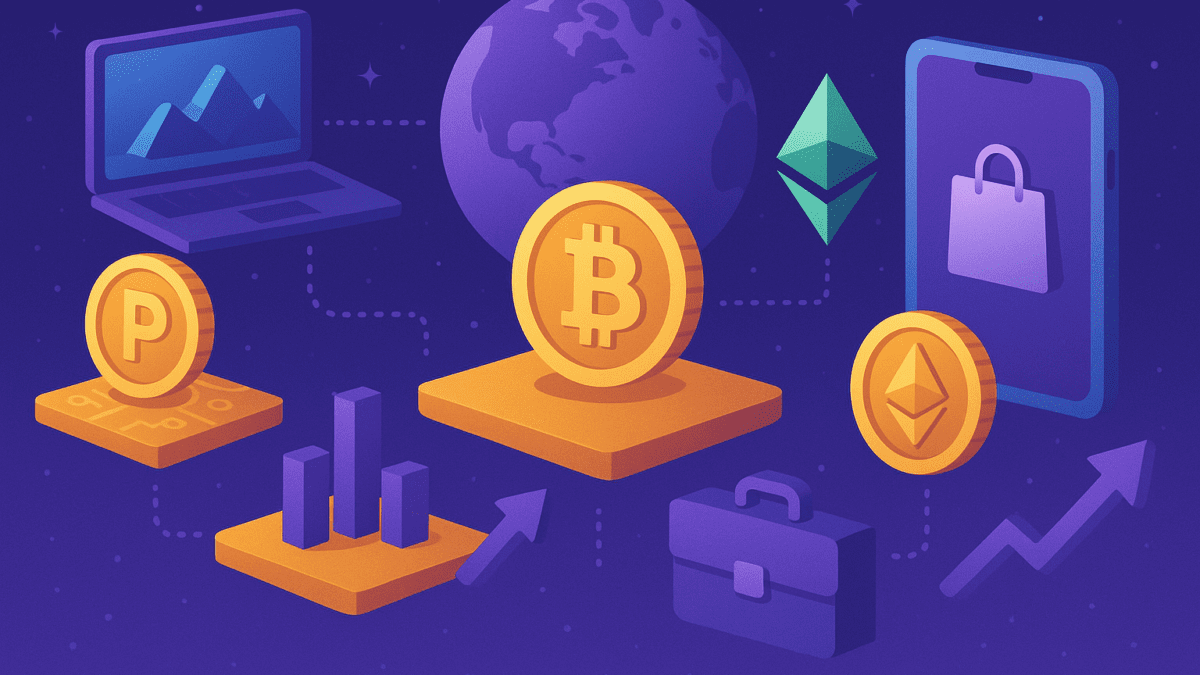Virtual Economies & Web3: New Revenue Streams for Global Brands
The rise of Web3 is transforming how businesses and consumers interact online. At the center of this shift are virtual economies—digital ecosystems where assets, services, and experiences are bought and sold using blockchain technology.
For global brands, this isn’t just a trend—it’s a new frontier of revenue growth. From digital collectibles to decentralized marketplaces, companies are leveraging Web3 to connect with customers in innovative ways.
This article explores how virtual economies and Web3 are opening new revenue streams, the industries already thriving, and strategies brands can adopt to stay competitive.
What Are Virtual Economies?
A virtual economy refers to a system where users exchange digital goods or services, often backed by blockchain. Unlike traditional digital markets, Web3-based economies ensure ownership, transparency, and decentralization.
Key features include:
- Digital Assets: NFTs, in-game items, and digital identities.
- Tokenization: Value is stored and exchanged through cryptocurrencies or tokens.
- Smart Contracts: Automated agreements remove intermediaries.
- Community Governance: Users help shape platforms via decentralized models.
Example: Games like Axie Infinity built economies where players earn income by trading digital assets.
Web3 & New Revenue Streams for Brands
Web3 gives companies the ability to monetize beyond physical products or services.
New opportunities include:
- NFTs & Digital Collectibles – Limited-edition branded items, from sneakers to artwork.
- Metaverse Experiences – Virtual stores, product launches, and immersive brand events.
- Decentralized Marketplaces – Direct-to-consumer channels without third-party platforms.
- Subscription Tokens – Access-based models where ownership unlocks benefits.
- Play-to-Earn & Engage-to-Earn Models – Rewarding customers for interactions with branded ecosystems.
According to McKinsey, the metaverse economy could reach $5 trillion by 2030, highlighting how virtual spaces are becoming critical business arenas.
Virtual Economies in Action: Industry Examples
1. Fashion & Luxury
Brands like Gucci and Nike sell NFT fashion items in virtual worlds, blending exclusivity with digital ownership.
- Gucci’s NFT sneakers sold for more than their physical versions.
- Nike acquired RTFKT, a digital sneaker company, to expand its Web3 presence.
2. Entertainment & Media
Musicians like Kings of Leon released albums as NFTs, giving fans exclusive content and ownership rights.
3. Gaming
Web3 gaming enables players to earn real value from in-game assets. Fortnite skins and Axie Infinity NFTs demonstrate billion-dollar opportunities.
4. Retail
Retailers are testing virtual storefronts in platforms like Decentraland, allowing customers to shop digitally before buying physical products.
5. Marketing & Loyalty
Brands now launch NFT-based loyalty programs, where digital ownership unlocks real-world perks.
Benefits of Embracing Web3 & Virtual Economies
For global brands, the shift offers several advantages:
- New Revenue Streams: Monetize digital goods alongside physical products.
- Stronger Customer Loyalty: Exclusive NFTs and experiences increase engagement.
- Global Reach: Virtual platforms remove geographical barriers.
- Data Transparency: Blockchain ensures trust in transactions.
- Brand Innovation: Early adoption signals market leadership.
Challenges to Overcome
While the potential is massive, brands must also address challenges:
- Regulatory Uncertainty: Governments are still shaping crypto and NFT policies.
- Security Risks: Protecting digital wallets and assets is critical.
- Scalability Issues: Some blockchain platforms struggle with transaction volumes.
- Consumer Education: Many customers are new to Web3 concepts.
By addressing these challenges, businesses can ensure smooth entry into virtual economies.
Step-by-Step Guide: How Brands Can Enter Web3
- Research & Strategy – Define clear objectives (e.g., brand awareness, revenue, loyalty).
- Choose the Right Platform – Select metaverse worlds, blockchain ecosystems, or NFT marketplaces.
- Create Value-Driven Assets – Ensure digital goods have real or experiential value.
- Engage Communities – Build loyal audiences via Discord, Twitter, and decentralized platforms.
- Pilot Programs – Start small with limited-edition drops or test events.
- Measure & Scale – Track ROI, adoption, and customer feedback before expansion.
Pro Tip: Partner with Web3-native creators to ensure authenticity and community trust.
Real-World Success Stories
- Coca-Cola: Launched NFT collectibles that raised significant funds for charity.
- Adidas: Entered the metaverse with branded wearables, selling out quickly.
- Starbucks Odyssey: Introduced Web3-based loyalty rewards, enhancing customer engagement.
These examples show how brands can combine innovation, loyalty, and revenue generation in virtual economies.
The Future of Web3 & Virtual Economies
The next decade will see virtual economies expand into every sector. From virtual real estate to tokenized loyalty, brands that adapt early will reap long-term rewards.
As more consumers spend time in digital environments, Web3 becomes not just an extension of the internet—but a core revenue channel for businesses worldwide.
Conclusion & Call-to-Action
Virtual economies and Web3 represent more than just a tech buzzword—they’re the foundation of new revenue streams for global brands. From NFTs to immersive metaverse experiences, companies have endless opportunities to innovate, monetize, and connect with customers.
Ready to future-proof your digital strategy? Explore ourB2B Content Syndication Services and learn how to integrate cutting-edge Web3 engagement into your brand journey today.
You May Also Like: Whitepapers vs. Ebooks vs. Case Studies: Which Content Format Wins in B2B Marketing





